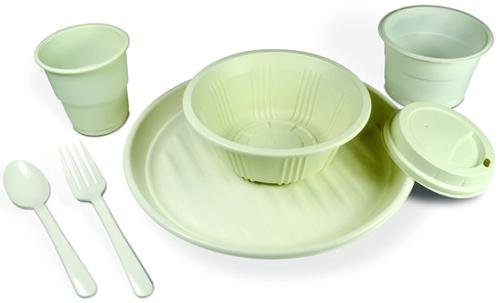HOW TO MAKE BIOPLASTICS
HOW TO MAKE BIOPLASTICS

Hey guys so today I decided to post something about science again. We all know the world is going green and alot of emphasis has been placed on the production of biofuels, but did you know that you could produce biodegradable plastics as well. We all know it takes almost forever for a polyethylene bag to decay, but with bioplastics you don't have to worry about that because they decay in around 3-6 months.
In my final year in college, I was tasked with the production of a biodegradable plate as my entrepreneurship project and boy was it difficult. I spent weeks upon weeks trying out just about every technique or procedure online, each with different measurements but the same ingredients. The funny thing was that they were all terribly wrong, how on earth they were able to produce bioplastics with those procedures is beyond me.
After weeks of testing different measurements and procedures, I finally got the desired product!!! So today I'll be sharing with you guys how I went about it.
WHAT ARE BIOPLASTICS
Bioplastics are plastics which aren't made from petroleum products, but instead are made from plant starches or agars. They are biodegradable and as such are better suited for the environment than normal plastics.
WHAT IS THE DIFFERENCE BETWEEN PLASTICS AND BIOPLASTICS
Normal plastics can only be made from petrochemical products while bioplastics are made from a variety of materials.
Normal plastics are not biodegradable but bioplastics are biodegradable
Normal plastics are toxic in nature while bioplastics aren't.
Plastics are composed primarily of carbon-carbon based polymers while bioplastics are composed of mainly starch(starch is a carbon based polymers but it contains other bonds like carbon-oxygen bonds).
PRODUCTION EQUIPMENT
The following equipment are required
- Burner
- Measuring cylinder
- Mixing pan(frying pan, pot etc)
- Stirrer
- Drier(optional)
- Knives
- Grinder
- Net/silk mesh
PRODUCTION MATERIALS
For the sake of this procedure, cassava starch shall be used as the starch component due to the fact that Nigeria is the largest producer of cassava in the world and as such cassava is the easiest source of starch to acquire. The process still holds true for other types of starch.
The following materials are required
- Cassava tubers/cassava starch
- Distilled water
- White vinegar(acetic acid)
- Glycerol
- Food colouring
PRODUCTION PROCESS
The production process can basically be broken down into two processes, raw material preparation and bioplastic production. For the sake of people who don't have access to cassava starch, a step by step procedure on how to make cassava starch is shown.
- Peel the cassava and cut it into grindable pieces
- Grind the cassava until it gets a smooth texture
- Put the mesh over a bucket then pour the grinded cassava into the bucket
- Squeeze out all the fluids from the cassava and dispose of what's left.
- Allow the liquid to stand in a bucket for about 3-5 hours, the liquid will separate into two distinct layers, water in top and starch at the bottom
- Decant the water out of the bucket and then you have your starch.
- For better results, dry the cassava starch in a drier until it becomes powder.
- Place the mixing pan on the burner then mix the water, glycerol and starch.(for every 15g of starch, add 15g of glycerol and 100ml of water).
- Stir the mixture until all the lumps formed dissapear
- Continue heating the mixture till it thickens and becomes clear
- Add a couple drops of food colouring and stir again
- Turn the mixture out into a mould or a piece of foil and let it cool.
- Allow it to cool for about 2-5 days and it'll be ready for use.
NOTE: The production of bioplastics requires a very high level of accuracy. If you make any wrong measurements then you might as well start again from scratch because the bioplastic will never solidify.
Bioplastics are a better option than normal plastics because of how environmentally friendly they are. They are perfectly usable and are almost completely physically identical to normal plastics.
That's it for today folks, if you liked it then
COMMENT
UPVOTE
RESTEEM
This is coming to you from @stach's very own @francistagbo.
Yes you are right!!! Bio plastics are better than normal plastic!!! Good write up
Thanks @temmy8284
Very useful information about bioplastics, never knew cassava was this ubiquitous. Thanks for sharing
You're welcome mate, you should try making some bioplastics yourself.
Bio products are the future because they have little or no side effect and so, cancer and other sickneses that can be gotten from silk will all be avaerted.
They truly are the future, thanks for reading @myxplicit